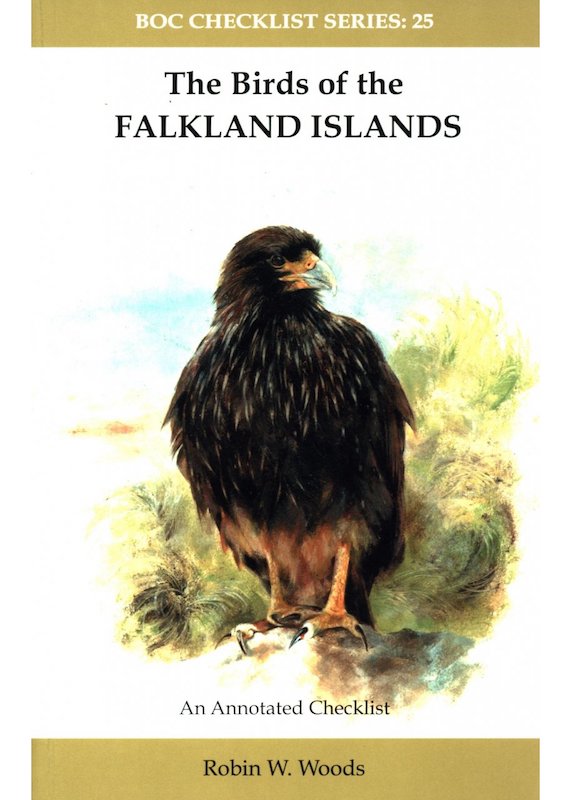
The Birds of the Falkland Islands – An Annotated Checklist by Robin W Woods | British Ornithologist’s Club| Paperback | July 2017 | 288 Pages | 32 Colour Plates | ISBN: 9780952288664
The Publisher’s View: Meticulously researched and fully referenced, The Birds of the Falkland Islands represents the culmination of decades of fieldwork by the author and others. lt summarises our current knowledge of the status and distribution of birds in this fascinating archipelago.
A full introduction covers all the expected biogeographical and ecological ground, with strong emphasis on the history of human–avian interactions and the development of wildlife conservation – both among the author’s special interests. The systematic list covers all 205 species whose occurrence in the Falklands is well-evidenced, plus another 54 species that require further confirmation. Seven appendices and 32 pages of colour photographs complete the work. This definitive account of Falklands birds will be an essential reference for all those with an interest in the amazing wildlife of the South Atlantic.
Fatbirder View: I wasn’t sure what I would make of this book… as such checklists tend to be of most interest when they cover something on your doorstep such as your own country or county. Fieldguides tempt you to travel whereas checklists can be rather dry tomes more for ornithologists than birders. So this was something of a revelation. My immediate impression is that the Falklands are rather like a southern Atlantic Orkney Islands with harsh but beautiful landscapes hardly lending themselves to an extensive avifauna excepting waterbirds in general and sea-birds in particular.However, like the UKs most northern isles the Falklands are home to some wonderful birds and an occasional landfall for a surprising number of vagrants, in their case from the Americas. Like much of the world non-native species, particularly plants and large herbivores abound mostly to the detriment of the natives, but in some cases offering shelter or nest sites. When you consider that there are an additional 50-odd species covered which cannot be added to the canon under modern standards one can see that, were it on the doorstep of the UK or UK it would be an island group of annual pilgrimage.There are a few colour plates (superbly photographed) just about enough to get you wondering what the chances of a birding trip would be. Take a look at the section describing the forays of past ornithologists to the Falklands and one can see how if it were as tropical as the Galapagos it would have fascinated Darwin as much, and indeed he did visit and described a number of its birds.This is an authoritative and fascinating work compiled by the leading living authority on its avifauna.
Buy this book from NHBS Fatbirder
